Stewart J. Calculus
Подождите немного. Документ загружается.


51. 52.
53. 54.
55. The integral
is improper for two reasons: The interval is infinite and
the integrand has an infinite discontinuity at 0. Evaluate it by
expressing it as a sum of improper integrals of Type 2 and
Type 1 as follows:
56. Evaluate
by the same method as in Exercise 55.
57–59 Find the values of for which the integral converges and
evaluate the integral for those values of .
58.
59.
60. (a) Evaluate the integral for , , , and .
(b) Guess the value of when is an arbitrary posi-
tive integer.
(c) Prove your guess using mathematical induction.
(a) Show that is divergent.
(b) Show that
This shows that we can’t define
62. The average speed of molecules in an ideal gas is
where is the molecular weight of the gas, is the gas con-
stant, is the gas temperature, and is the molecular speed.
Show that
v !
'
8RT
&
M
vT
RM
v !
4
s
&
(
M
2RT
)
3%2
y
%
0
v
3
e
"Mv
2
%#2RT $
dv
y
%
"%
f #x$ dx ! lim
t l %
y
t
"t
f #x$ dx
lim
t
l
%
y
t
"t
x dx ! 0
x
%
"%
x dx
61.
nx
%
0
x
n
e
"x
dx
321n ! 0
x
%
0
x
n
e
"x
dx
y
1
0
x
p
ln x dx
y
%
e
1
x#ln x$
p
dx
y
1
0
1
x
p
dx
57.
p
p
y
%
2
1
x
s
x
2
" 4
dx
!
y
1
0
1
s
x
#1 ! x$
dx !
y
%
1
1
s
x
#1 ! x$
dx
y
%
0
1
s
x
#1 ! x$
dx
!0, %$
y
%
0
1
s
x
#1 ! x$
dx
y
&
0
sin
2
x
s
x
dx
y
1
0
sec
2
x
x
s
x
dx
y
%
0
arctan x
2 ! e
x
dx
y
%
1
x ! 1
s
x
4
" x
dx
30.
32.
33. 34.
35. 36.
37. 38.
39. 40.
41– 46 Sketch the region and find its area (if the area is finite).
41.
42.
;
;
44.
;
45.
;
46.
;
47. (a) If , use your calculator or computer to
make a table of approximate values of for
, 5, 10, 100, 1000, and 10,000. Does it appear that
is convergent?
(b) Use the Comparison Theorem with to show
that is convergent.
(c) Illustrate part (b) by graphing and on the same screen
for . Use your graph to explain intuitively
why is convergent.
;
48. (a) If , use your calculator or computer to
make a table of approximate values of for ,
10, 100, 1000, and 10,000. Does it appear that
is convergent or divergent?
(b) Use the Comparison Theorem with to show
that is divergent.
(c) Illustrate part (b) by graphing and on the same screen
for . Use your graph to explain intuitively
why is divergent.
49–54 Use the Comparison Theorem to determine whether the
integral is convergent or divergent.
50.
y
%
1
2 ! e
"x
x
dx
y
%
0
x
x
3
! 1
dx
49.
x
%
2
t#x$ dx
2 ' x ' 20
tf
x
%
2
t#x$ dx
f #x$ ! 1%
s
x
x
%
2
t#x$ dx
t ! 5
x
t
2
t#x$ dx
t#x$ ! 1%
(
s
x
" 1
)
x
%
1
t#x$ dx
1 ' x ' 10
tf
x
%
1
t#x$ dx
f #x$ ! 1%x
2
x
%
1
t#x$ dx
t ! 2
x
t
1
t#x$ dx
t#x$ ! #sin
2
x$%x
2
S !
{
#x, y$
&
"2
#
x ' 0, 0 ' y ' 1%
s
x ! 2
}
S ! *#x, y$
&
0 ' x
#
&
%2, 0 ' y ' sec
2
x+
S ! *#x, y$
&
x $ 0, 0 ' y ' x%#x
2
! 9$+
S ! *#x, y$
&
0 ' y ' 2%#x
2
! 9$+
43.
S ! *#x, y$
&
x $ "2, 0 ' y ' e
"x%2
+
S ! *#x, y$
&
x ' 1, 0 ' y ' e
x
+
y
1
0
ln x
s
x
dx
y
2
0
z
2
ln z dz
y
1
0
e
1%x
x
3
dx
y
0
"1
e
1%x
x
3
dx
y
&
&
%2
csc x dx
y
3
0
dx
x
2
" 6x ! 5
y
1
0
1
4y " 1
dy
y
33
0
#x " 1$
"1%5
dx
y
1
0
dx
s
1 " x
2
y
3
"2
1
x
4
dx
31.
y
8
6
4
#x " 6$
3
dx
y
14
"2
dx
s
4
x ! 2
29.
552
|| ||
CHAPTER 8 TECHNIQUES OF INTEGRATION

70. Estimate the numerical value of by writing it as
the sum of and . Approximate the first inte-
gral by using Simpson’s Rule with and show that the
second integral is smaller than , which is less than
0.0000001.
71. If is continuous for , the Laplace transform of is
the function defined by
and the domain of is the set consisting of all numbers for
which the integral converges. Find the Laplace transforms of
the following functions.
(a) (b) (c)
72. Show that if for , where and are
constants, then the Laplace transform exists for .
73. Suppose that and for ,
where is continuous. If the Laplace transform of is
and the Laplace transform of is , show that
74. If is convergent and and are real numbers,
show that
75. Show that .
76. Show that by interpreting the
integrals as areas.
77. Find the value of the constant for which the integral
converges. Evaluate the integral for this value of .
78. Find the value of the constant for which the integral
converges. Evaluate the integral for this value of .
79. Suppose is continuous on and . Is it
possible that is convergent?
80. Show that if and , then the following inte-
gral is convergent.
y
%
0
x
a
1 ! x
b
dx
b ( a ! 1a ( "1
x
%
0
f #x$ dx
lim
x
l
%
f #x$ ! 1!0, %$f
C
y
%
0
(
x
x
2
! 1
"
C
3x ! 1
)
dx
C
C
y
%
0
(
1
s
x
2
! 4
"
C
x ! 2
)
dx
C
x
%
0
e
"x
2
dx ! x
1
0
s
"ln y
dy
x
%
0
x
2
e
"x
2
dx !
1
2
x
%
0
e
"x
2
dx
y
a
"%
f #x$ dx !
y
%
a
f #x$ dx !
y
b
"%
f #x$ dx !
y
%
b
f #x$ dx
ba
x
%
"%
f #x$ dx
s ( aG#s$ ! sF#s$ " f #0$
G#s$f *#t$F#s$
f #t$f *
t $ 00 ' f *#t$ ' Ke
at
0 ' f #t$ ' Me
at
s ( aF#s$
aMt $ 00 ' f #t$ ' Me
at
f #t$ ! tf #t$ ! e
t
f #t$ ! 1
sF
F#s$ !
y
%
0
f #t$e
"st
dt
F
ft $ 0f #t$
x
%
4
e
"4x
dx
n ! 8
x
%
4
e
"x
2
dxx
4
0
e
"x
2
dx
x
%
0
e
"x
2
dx
63. We know from Example 1 that the region
has infinite area. Show
that by rotating about the -axis we obtain a solid with
finite volume.
64. Use the information and data in Exercises 29 and 30 of Sec-
tion 6.4 to find the work required to propel a 1000-kg satellite
out of the earth’s gravitational field.
65. Find the escape velocity that is needed to propel a rocket
of mass out of the gravitational field of a planet with mass
and radius . Use Newton’s Law of Gravitation (see Exer-
cise 29 in Section 6.4) and the fact that the initial kinetic
energy of supplies the needed work.
66. Astronomers use a technique called stellar stereography to
determine the density of stars in a star cluster from the
observed (two-dimensional) density that can be analyzed
from a photograph. Suppose that in a spherical cluster of
radius the density of stars depends only on the distance
from the center of the cluster. If the perceived star density is
given by , where is the observed planar distance from
the center of the cluster, and is the actual density, it can
be shown that
If the actual density of stars in a cluster is ,
find the perceived density .
67. A manufacturer of lightbulbs wants to produce bulbs that last
about 700 hours but, of course, some bulbs burn out faster
than others. Let be the fraction of the company’s bulbs
that burn out before hours, so always lies between 0
and 1.
(a) Make a rough sketch of what you think the graph of
might look like.
(b) What is the meaning of the derivative ?
(c) What is the value of ? Why?
68. As we saw in Section 7.5, a radioactive substance decays
exponentially: The mass at time is , where
is the initial mass and is a negative constant. The mean
life of an atom in the substance is
For the radioactive carbon isotope, , used in radiocarbon
dating, the value of is . Find the mean life of a
atom.
Determine how large the number has to be so that
y
%
a
1
x
2
! 1
dx
#
0.001
a
69.
14
C
"0.000121k
14
C
M ! "k
y
%
0
te
kt
dt
M
km#0$
m#t$ ! m#0$e
kt
t
x
%
0
r#t$ dt
r#t$ ! F*#t$
F
F#t$t
F#t$
y#s$
x#r$ !
1
2
#R " r$
2
y#s$ !
y
R
s
2r
s
r
2
" s
2
x#r$ dr
x#r$
sy#s$
rR
1
2
mv
2
0
RM
m
v
0
x!
! ! *#x, y$
&
x $ 1, 0 ' y ' 1%x+
SECTION 8.8 IMPROPER INTEGRALS
|| ||
553

Note: Additional practice in techniques of integration is provided
in Exercises 8.5.
1– 40 Evaluate the integral.
1. 2.
3. 4.
y
4
1
dt
#2t ! 1$
3
y
&
%2
0
cos
)
1 ! sin
)
d
)
y
5
0
ye
"0.6y
dy
y
5
0
x
x ! 10
dx
5. 6.
7. 8.
9. 10.
y
1
0
s
arctan x
1 ! x
2
dx
y
4
1
x
3%2
ln x dx
y
dx
s
e
x
" 1
y
sin#ln t$
t
dt
y
1
y
2
" 4y " 12
dy
y
&
%2
0
sin
3
)
cos
2
)
d
)
E X E R C I S E S
554
|| ||
CHAPTER 8 TECHNIQUES OF INTEGRATION
REVIEW
C O N C E P T C H E C K
8
5. State the rules for approximating the definite integral
with the Midpoint Rule, the Trapezoidal Rule, and Simpson’s
Rule. Which would you expect to give the best estimate? How
do you approximate the error for each rule?
6. Define the following improper integrals.
(a) (b) (c)
7. Define the improper integral for each of the follow-
ing cases.
(a) has an infinite discontinuity at .
(b) has an infinite discontinuity at .
(c) has an infinite discontinuity at , where .
8. State the Comparison Theorem for improper integrals.
a
#
c
#
bcf
bf
af
x
b
a
f #x$ dx
y
%
"%
f #x$ dx
y
b
"%
f #x$ dx
y
%
a
f #x$ dx
x
b
a
f #x$ dx
1. State the rule for integration by parts. In practice, how do you
use it?
2. How do you evaluate if is odd? What if is
odd? What if and are both even?
3. If the expression occurs in an integral, what sub-
stitution might you try? What if occurs? What if
occurs?
4. What is the form of the partial fraction expansion of a rational
function if the degree of is less than the degree of
and has only distinct linear factors? What if a linear
factor is repeated? What if has an irreducible quadratic
factor (not repeated)? What if the quadratic factor is repeated?
Q#x$
Q#x$Q
PP#x$%Q#x$
s
x
2
" a
2
s
a
2
! x
2
s
a
2
" x
2
nm
nm
x sin
m
x cos
n
x dx
Determine whether the statement is true or false. If it is true, explain why.
If it is false, explain why or give an example that disproves the statement.
1. can be put in the form .
2. can be put in the form .
3. can be put in the form .
4. can be put in the form .
5.
6.
is convergent.
7. If is continuous, then .
x
%
"%
f #x$ dx ! lim
t
l
%
x
t
"t
f #x$ dxf
y
%
1
1
x
s
2
dx
y
4
0
x
x
2
" 1
dx !
1
2
ln 15
A
x
!
B
x
2
! 4
x
2
" 4
x#x
2
! 4$
A
x
2
!
B
x " 4
x
2
! 4
x
2
#x " 4$
A
x
!
B
x ! 2
!
C
x " 2
x
2
! 4
x#x
2
" 4$
A
x ! 2
!
B
x " 2
x#x
2
! 4$
x
2
" 4
8. The Midpoint Rule is always more accurate than the
Trapezoidal Rule.
9. (a) Every elementary function has an elementary derivative.
(b) Every elementary function has an elementary anti-
derivative.
10. If is continuous on and is convergent, then
is convergent.
11. If is a continuous, decreasing function on and
, then is convergent.
12. If and are both convergent, then
is convergent.
13. If and are both divergent, then
is divergent.
14. If and diverges, then also
diverges.
x
%
0
f #x$ dxx
%
0
t#x$ dxf #x$ ' t#x$
x
%
a
! f #x$ ! t#x$" dx
x
%
a
t#x$ dxx
%
a
f #x$ dx
x
%
a
! f #x$ ! t#x$" dx
x
%
a
t#x$ dx
x
%
a
f #x$ dx
x
%
1
f #x$ dxlim
x
l
%
f #x$ ! 0
!1, %$f
x
%
0
f #x$ dx
x
%
1
f #x$ dx!0, %$f
T R U E - FA L S E Q U I Z

49. 50.
;
51–52 Evaluate the indefinite integral. Illustrate and check that
your answer is reasonable by graphing both the function and its
antiderivative (take ).
51. 52.
;
53. Graph the function and use the graph to
guess the value of the integral . Then evaluate the
integral to confirm your guess.
54. (a) How would you evaluate by hand? (Don’t
actually carry out the integration.)
(b) How would you evaluate using tables?
(Don’t actually do it.)
(c) Use a CAS to evaluate .
(d) Graph the integrand and the indefinite integral on the
same screen.
55–58 Use the Table of Integrals on the Reference Pages to
evaluate the integral.
55. 56.
57. 58.
59. Verify Formula 33 in the Table of Integrals (a) by differentia-
tion and (b) by using a trigonometric substitution.
60. Verify Formula 62 in the Table of Integrals.
61. Is it possible to find a number such that is
convergent?
62. For what values of is convergent? Evaluate
the integral for those values of .
63–64 Use (a) the Trapezoidal Rule, (b) the Midpoint Rule,
and (c) Simpson’s Rule with to approximate the given
integral. Round your answers to six decimal places.
63. 64.
65. Estimate the errors involved in Exercise 63, parts (a) and (b).
How large should be in each case to guarantee an error of
less than 0.00001?
66. Use Simpson’s Rule with to estimate the area under
the curve from to .x ! 4x ! 1y ! e
x
%x
n ! 6
n
y
4
1
s
x
cos x dx
y
4
2
1
ln x
dx
n ! 10
a
x
%
0
e
ax
cos x dxa
x
%
0
x
n
dxn
y
cot x
s
1 ! 2 sin x
dx
y
cos x
s
4 ! sin
2
x
dx
y
csc
5
t dt
y
s
4x
2
" 4x " 3
dx
x x
5
e
"2x
dx
x x
5
e
"2x
dx
x x
5
e
"2x
dx
CAS
x
2
&
0
f #x$ dx
f #x$ ! cos
2
x sin
3
x
y
x
3
s
x
2
! 1
dx
y
ln#x
2
! 2x ! 2$ dx
C ! 0
y
%
1
tan
"1
x
x
2
dx
y
%
"%
dx
4x
2
! 4x ! 5
11. 12.
13. 14.
15. 16.
17. 18.
19. 20.
21. 22.
23. 24.
25. 26.
27. 28.
29. 30.
31. 32.
33. 34.
35. 36.
37. 38.
39. 40.
41–50 Evaluate the integral or show that it is divergent.
41. 42.
43. 44.
45. 46.
47. 48.
y
1
"1
dx
x
2
" 2x
y
1
0
x " 1
s
x
dx
y
1
0
1
2 " 3x
dx
y
4
0
ln x
s
x
dx
y
6
2
y
s
y " 2
dy
y
%
2
dx
x ln x
y
%
1
ln x
x
4
dx
y
%
1
1
#2x ! 1$
3
dx
y
&
%3
&
%4
s
tan
)
sin 2
)
d
)
y
1%2
0
xe
2x
#1 ! 2x$
2
dx
y
x
2
#x ! 2$
3
dx
y
#cos x ! sin x$
2
cos 2x dx
y
1 " tan
)
1 ! tan
)
d
)
y
1
s
x ! x
3%2
dx
y
#arcsin x$
2
dx
y
x
2
#4 " x
2
$
3%2
dx
y
&
%4
0
x sin x
cos
3
x
dx
y
ln 10
0
e
x
s
e
x
" 1
e
x
! 8
dx
y
dx
e
x
s
1 " e
"2x
y
1
"1
x
5
sec x dx
y
s
3
x
! 1
s
3
x
" 1
dx
y
&
%2
0
cos
3
x sin 2x dx
y
x sin x cos x dx
y
3x
3
" x
2
! 6x " 4
#x
2
! 1$#x
2
! 2$
dx
y
e
x
cos x dx
y
dx
x
s
x
2
! 1
y
te
s
t
dt
y
dx
s
x
2
" 4x
y
tan
5
)
sec
3
)
d
)
y
x ! 1
9x
2
! 6x ! 5
dx
y
x
2
! 8x " 3
x
3
! 3x
2
dx
y
x sec x tan x dx
y
sec
6
)
tan
2
)
d
)
y
x " 1
x
2
! 2x
dx
y
x
2
! 2
x ! 2
dx
y
e
s
3
x
dx
y
1
"1
sin x
1 ! x
2
dx
y
2
1
s
x
2
" 1
x
dx
CHAPTER 8 REVIEW
|| ||
555
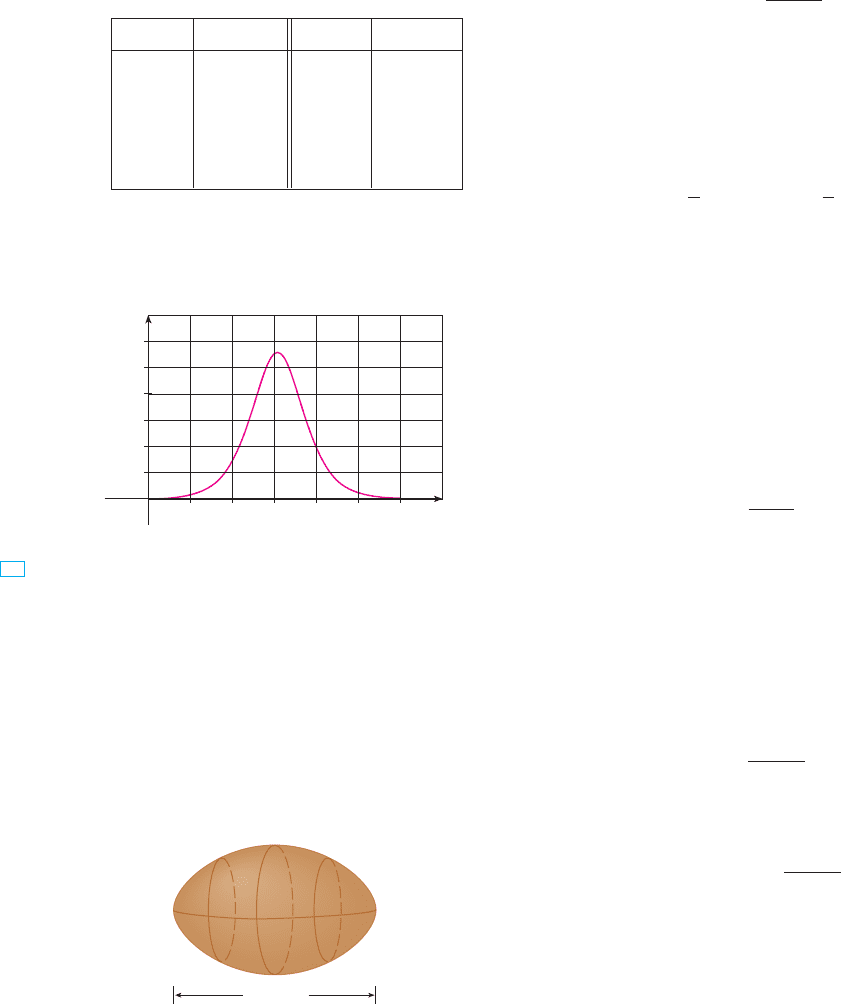
71. Use the Comparison Theorem to determine whether the
integral
is convergent or divergent.
72. Find the area of the region bounded by the hyperbola
and the line .
73. Find the area bounded by the curves and
between and .
74. Find the area of the region bounded by the curves
, , and .
75. The region under the curve , is
rotated about the -axis. Find the volume of the resulting solid.
76. The region in Exercise 75 is rotated about the -axis. Find the
volume of the resulting solid.
77. If is continuous on and , show that
78. We can extend our definition of average value of a continuous
function to an infinite interval by defining the average value
of on the interval to be
(a) Find the average value of on the interval .
(b) If and is divergent, show that the
average value of on the interval is , if
this limit exists.
(c) If is convergent, what is the average value of
on the interval ?
(d) Find the average value of on the interval .
79. Use the substitution to show that
80. The magnitude of the repulsive force between two point
charges with the same sign, one of size 1 and the other of size
, is
where is the distance between the charges and is a con-
stant. The potential at a point due to the charge is
defined to be the work expended in bringing a unit charge to
from infinity along the straight line that joins and . Find
a formula for .V
PqP
qPV
+
0
r
F !
q
4
&
+
0
r
2
q
y
%
0
ln x
1 ! x
2
dx ! 0
u ! 1%x
!0, %$y ! sin x
!a, %$
f
x
%
a
f #x$ dx
lim
x l %
f #x$!a, %$f
x
%
a
f #x$ dxf #x$ $ 0
!0, %$y ! tan
"1
x
lim
t
l
%
1
t " a
y
t
a
f #x$ dx
!a, %$f
y
%
0
f *#x$ dx ! "f #0$
lim
x l %
f #x$ ! 0!0, %$f *
y
x
y ! cos
2
x, 0 ' x '
&
%2
x ! 1y ! 1%
(
2 "
s
x
)
y ! 1%
(
2 !
s
x
)
x !
&
x ! 0
y ! cos
2
xy ! cos x
y ! 3y
2
" x
2
! 1
y
%
1
x
3
x
5
! 2
dx
67. The speedometer reading ( ) on a car was observed at
1-minute intervals and recorded in the chart. Use Simpson’s
Rule to estimate the distance traveled by the car.
68. A population of honeybees increased at a rate of bees per
week, where the graph of is as shown. Use Simpson’s Rule
with six subintervals to estimate the increase in the bee popu-
lation during the first 24 weeks.
69. (a) If , use a graph to find an upper bound
for .
(b) Use Simpson’s Rule with to approximate
and use part (a) to estimate the error.
(c) How large should be to guarantee that the size of the
error in using is less than ?
70. Suppose you are asked to estimate the volume of a football.
You measure and find that a football is 28 cm long. You use a
piece of string and measure the circumference at its widest
point to be 53 cm. The circumference 7 cm from each end is
45 cm. Use Simpson’s Rule to make your estimate.
28 cm
0.00001S
n
n
x
&
0
f #x$ dx
n ! 10
&
f
#4$
#x$
&
f #x$ ! sin#sin x$
CAS
r
0
2420161284
(weeks)
t
4000
8000
12000
r
r#t$
v
556
|| ||
CHAPTER 8 TECHNIQUES OF INTEGRATION
t (min) (mi%h) t (min) (mi%h)
0 40 6 56
1
42 7 57
2
45 8 57
3
49 9 55
4
52 10 56
5 54
vv
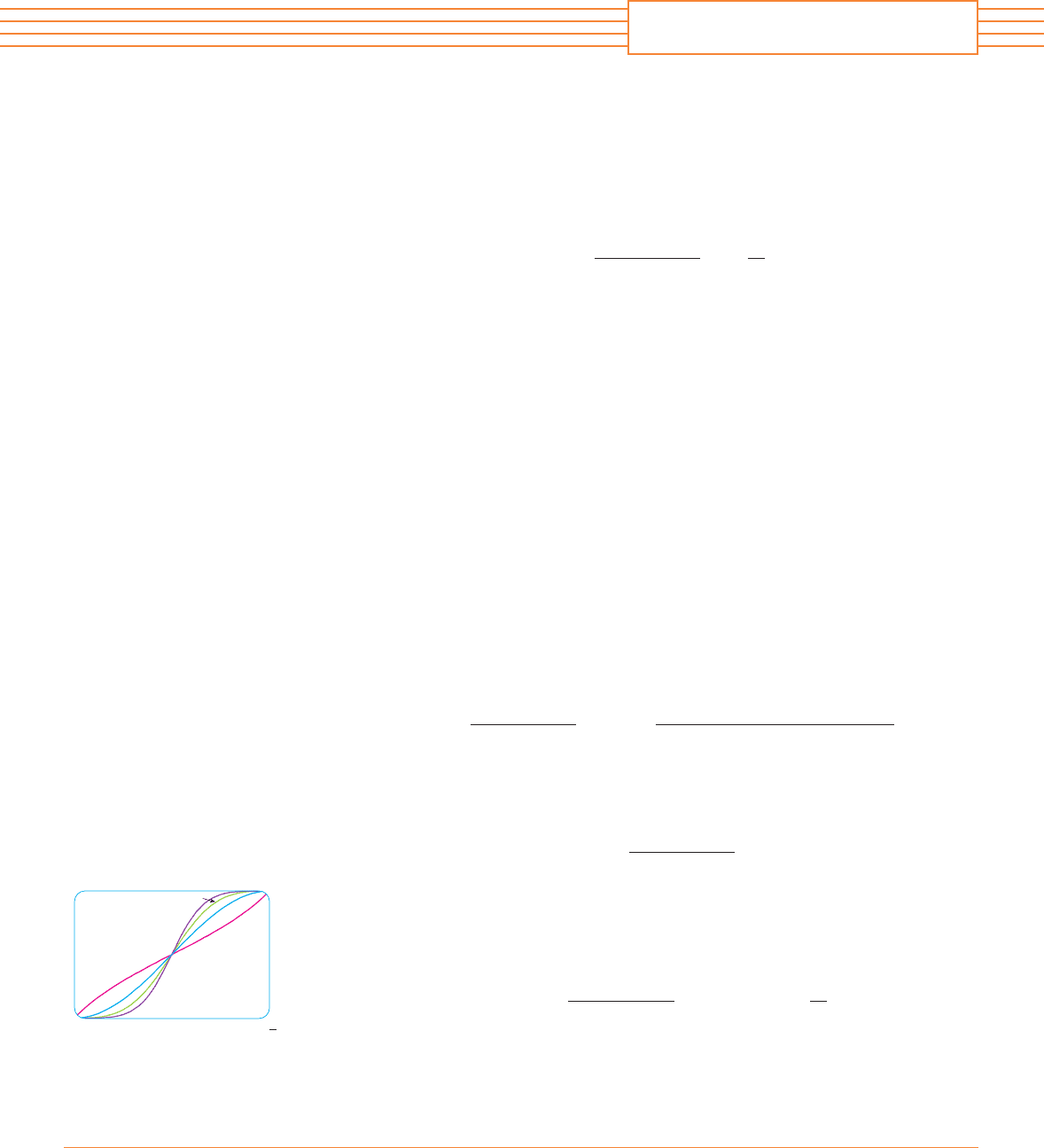
557
EXAMPLE 1
(a) Prove that if is a continuous function, then
(b) Use part (a) to show that
for all positive numbers .
SOLUTION
(a) At first sight, the given equation may appear somewhat baffling. How is it possible
to connect the left side to the right side? Connections can often be made through one of
the principles of problem solving: introduce something extra. Here the extra ingredient is
a new variable. We often think of introducing a new variable when we use the Substitu-
tion Rule to integrate a specific function. But that technique is still useful in the present
circumstance in which we have a general function .
Once we think of making a substitution, the form of the right side suggests that it
should be . Then . When , ; when , . So
But this integral on the right side is just another way of writing . So the given
equation is proved.
(b) If we let the given integral be and apply part (a) with , we get
A well-known trigonometric identity tells us that and
, so we get
Notice that the two expressions for are very similar. In fact, the integrands have the
same denominator. This suggests that we should add the two expressions. If we do so,
we get
Therefore, . M
I !
&
%4
2I !
y
&
%2
0
sin
n
x ! cos
n
x
sin
n
x ! cos
n
x
dx !
y
&
%2
0
1 dx !
&
2
I
I !
y
&
%2
0
cos
n
x
cos
n
x ! sin
n
x
dx
cos#
&
%2 " x$ ! sin x
sin#
&
%2 " x$ ! cos x
I !
y
&
%2
0
sin
n
x
sin
n
x ! cos
n
x
dx !
y
&
%2
0
sin
n
#
&
%2 " x$
sin
n
#
&
%2 " x$ ! cos
n
#
&
%2 " x$
dx
a !
&
%2I
x
a
0
f #x$ dx
y
a
0
f #a " x$ dx ! "
y
0
a
f #u$ du !
y
a
0
f #u$ du
u ! 0x ! au ! ax ! 0du ! "dxu ! a " x
f
n
y
&
%2
0
sin
n
x
sin
n
x ! cos
n
x
dx !
&
4
y
a
0
f #x$ dx !
y
a
0
f #a " x$ dx
f
P R O B L E M S P L U S
N The principles of problem solving are
discussed on page 54.
N Cover up the solution to the example and try it
yourself first.
N The computer graphs in Figure 1 make it
seem plausible that all of the integrals in the
example have the same value. The graph of each
integrand is labeled with the corresponding
value of .n
1
0
1
2
4
3
π
2
F I G U R E 1
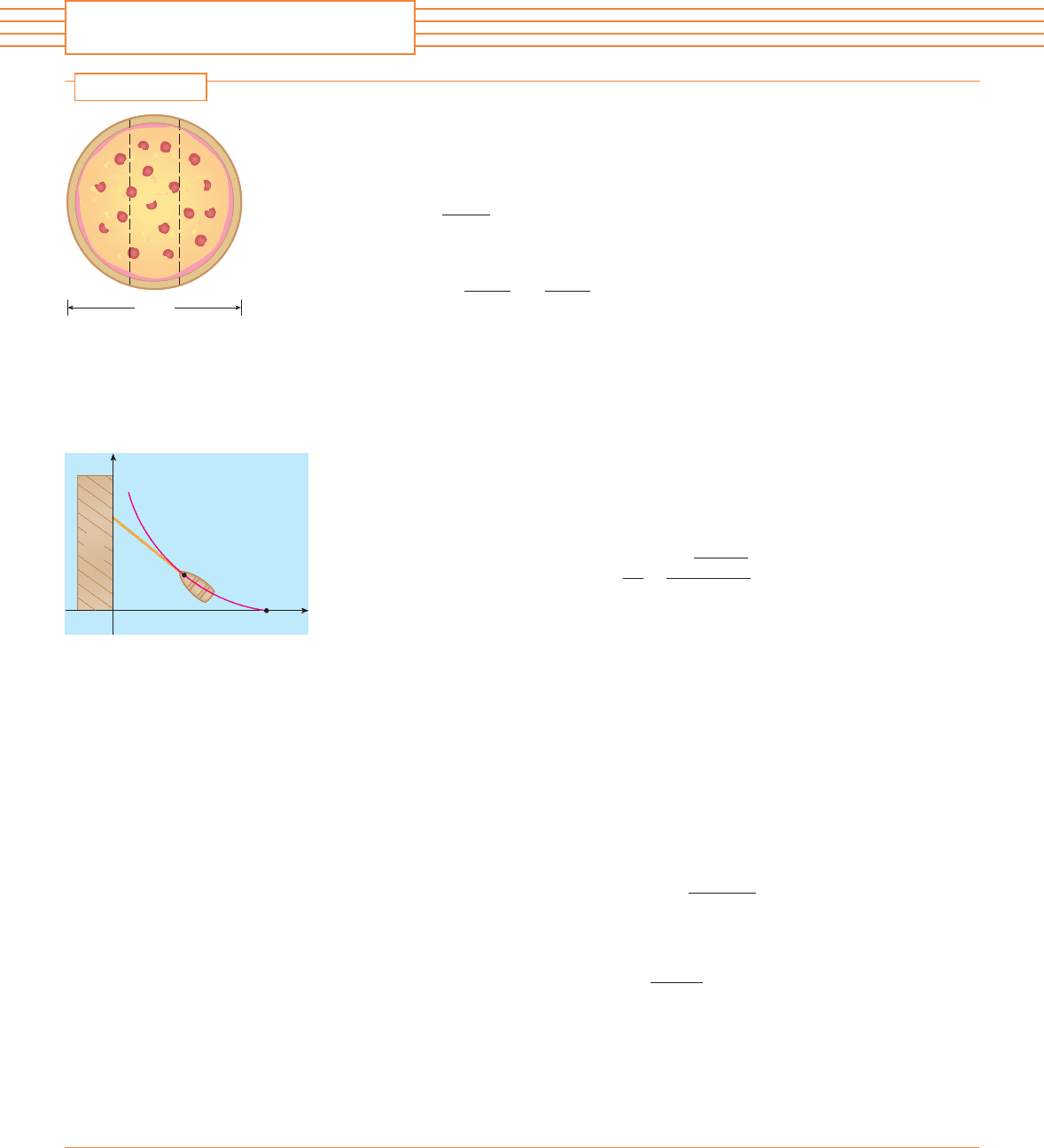
558
;
1. Three mathematics students have ordered a 14-inch pizza. Instead of slicing it in the tradi-
tional way, they decide to slice it by parallel cuts, as shown in the figure. Being mathematics
majors, they are able to determine where to slice so that each gets the same amount of pizza.
Where are the cuts made?
2. Evaluate .
The straightforward approach would be to start with partial fractions, but that would be brutal.
Try a substitution.
3. Evaluate .
4. The centers of two disks with radius 1 are one unit apart. Find the area of the union of the two
disks.
5. An ellipse is cut out of a circle with radius . The major axis of the ellipse coincides with a
diameter of the circle and the minor axis has length . Prove that the area of the remaining
part of the circle is the same as the area of an ellipse with semiaxes and .
6. A man initially standing at the point walks along a pier pulling a rowboat by a rope of
length . The man keeps the rope straight and taut. The path followed by the boat is a curve
called a tractrix and it has the property that the rope is always tangent to the curve (see the
figure).
(a) Show that if the path followed by the boat is the graph of the function , then
(b) Determine the function .
7. A function is defined by
Find the minimum value of .
8. If is a positive integer, prove that
9. Show that
Hint: Start by showing that if denotes the integral, then
I
k!1
!
2k ! 2
2k ! 3
I
k
I
n
y
1
0
#1 " x
2
$
n
dx !
2
2n
#n!$
2
#2n ! 1$!
y
1
0
#ln x$
n
dx ! #"1$
n
n!
n
f
0 ' x ' 2
&
f #x$ !
y
&
0
cos t cos#x " t$ dt
f
y ! f #x$
f *#x$ !
dy
dx
!
"
s
L
2
" x
2
x
y ! f #x$
L
O
a " ba
2b
a
y
1
0
(
s
3
1 " x
7
"
s
7
1 " x
3
)
dx
y
1
x
7
" x
dx
PROBLEM S
P R O B L E M S P L U S
F I G U R E F O R P RO B LE M 1
14 in
y
x
O
(L,0)
(x,y)
L
pier
F I G U R E F O R P RO B LE M 6
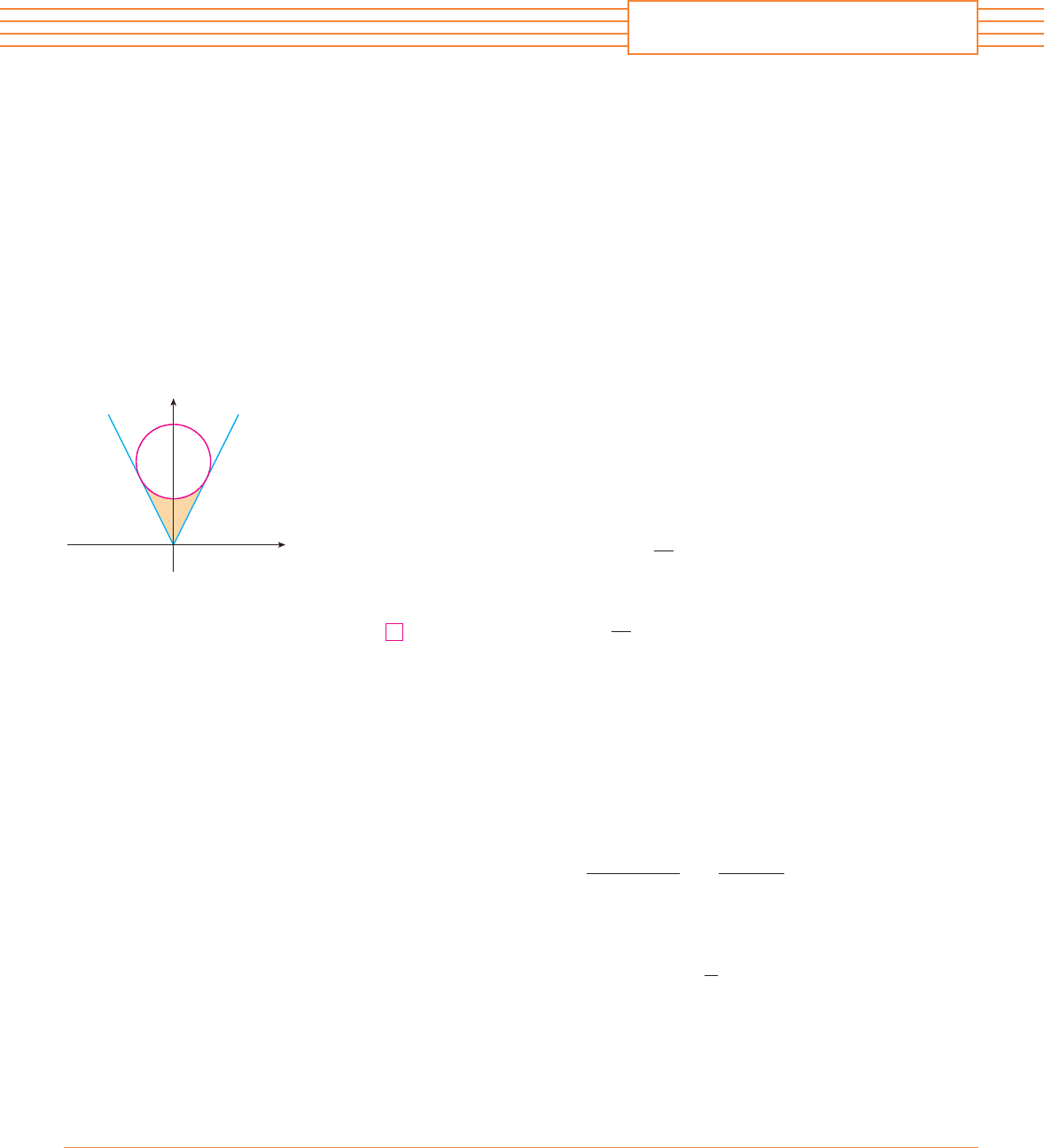
559
;
10. Suppose that is a positive function such that is continuous.
(a) How is the graph of related to the graph of ? What happens
as ?
(b) Make a guess as to the value of the limit
based on graphs of the integrand.
(c) Using integration by parts, confirm the guess that you made in part (b). [Use the fact that,
since is continuous, there is a constant such that for .]
11. If , find .
;
12. Graph and use the graph to estimate the value of such that is a
maximum. Then find the exact value of that maximizes this integral.
13. The circle with radius 1 shown in the figure touches the curve twice. Find the area
of the region that lies between the two curves.
14. A rocket is fired straight up, burning fuel at the constant rate of kilograms per second. Let
be the velocity of the rocket at time and suppose that the velocity of the exhaust
gas is constant. Let be the mass of the rocket at time and note that decreases as
the fuel burns. If we neglect air resistance, it follows from Newton’s Second Law that
where the force . Thus
Let be the mass of the rocket without fuel, the initial mass of the fuel, and
. Then, until the fuel runs out at time , the mass is .
(a) Substitute into Equation 1 and solve the resulting equation for . Use the
initial condition to evaluate the constant.
(b) Determine the velocity of the rocket at time . This is called the burnout velocity.
(c) Determine the height of the rocket at the burnout time.
(d) Find the height of the rocket at any time .
15. Use integration by parts to show that, for all ,
16. Suppose , is continuous on and for all . Show that
,
y
1
0
f #x$ dx
,
'
1
2
x
&
f ,#x$
&
' 3!0, 1"f ,f #1$ ! f *#1$ ! 0
0
#
y
%
0
sin t
ln#1 ! x ! t$
dt
#
2
ln#1 ! x$
x ( 0
t
y ! y#t$
t ! M
2
%b
v#0$ ! 0
vM ! M
0
" bt
M ! M
0
" btt ! M
2
bM
0
! M
1
! M
2
M
2
M
1
M
d
v
dt
" ub ! "Mt
1
F ! "Mt
F ! M
d
v
dt
" ub
MtM ! M#t$
ut
v ! v#t$
b
y !
&
2x
&
t
x
t!1
t
f #x$ dxtf #x$ ! sin#e
x
$
lim
t l 0
-y
1
0
!bx ! a#1 " x$"
t
dx
.
1%t
0
#
a
#
b
0 ' x ' 1
&
f *#x$
&
' MMf *
lim
n
l
%
y
1
0
f #x$ sin nx dx
n l %
y ! f #x$y ! f #x$ sin nx
f *f
P R O B L E M S P L U S
F I G U R E F O R P RO B LE M 1 3
y=|2x|
y
0
x
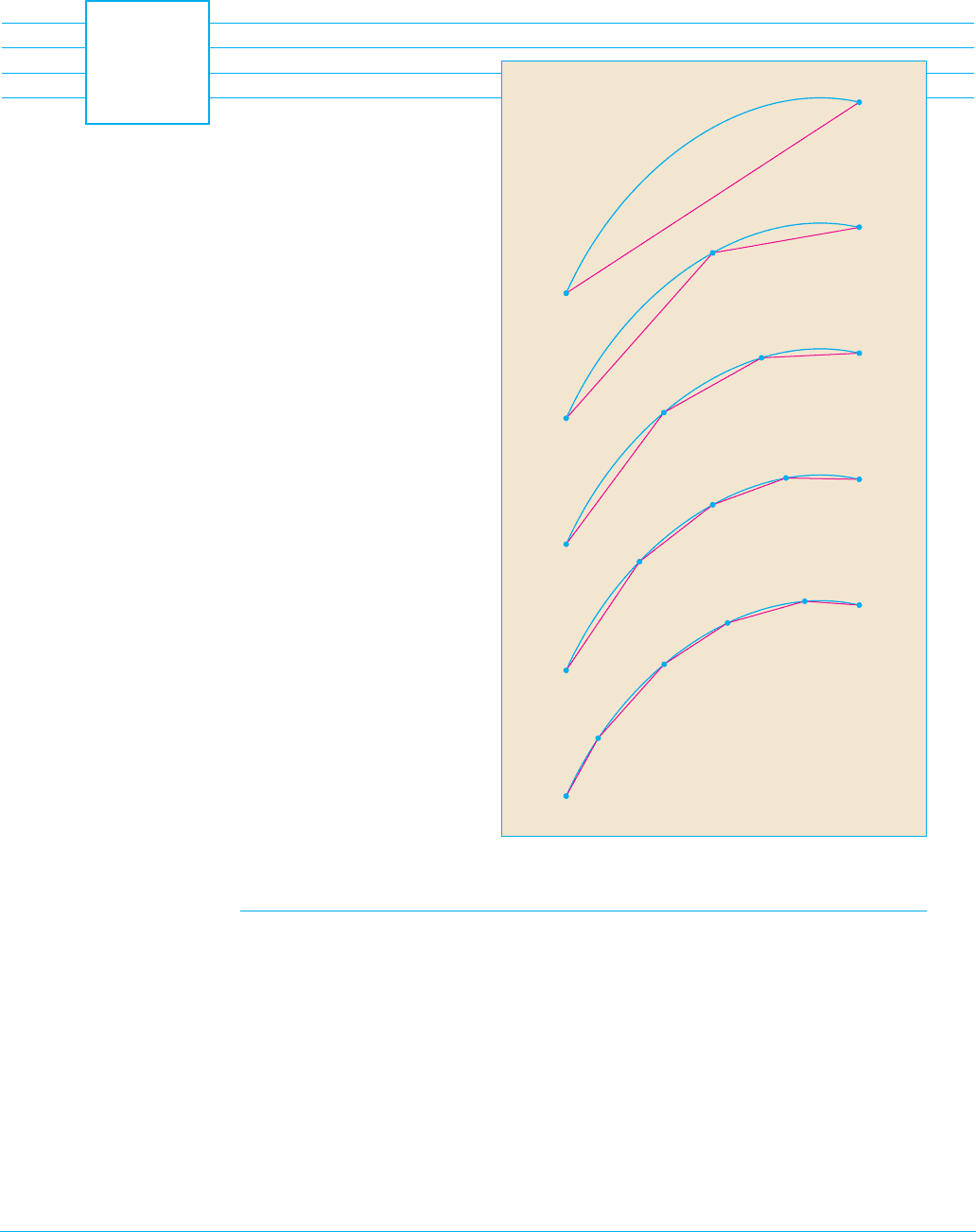
560
We looked at some applications of integrals in Chapter 6: areas, volumes, work, and
average values. Here we explore some of the many other geometric applications of
integration—the length of a curve, the area of a surface—as well as quantities of
interest in physics, engineering, biology, economics, and statistics. For instance, we will
investigate the center of gravity of a plate, the force exerted by water pressure on a dam,
the flow of blood from the human heart, and the average time spent on hold during a
customer support telephone call.
The length of a curve
is the limit of lengths of
inscribed polygons.
FURTHER
APPLICATIONS
OF INTEGRATION
9

ARC LENGTH
What do we mean by the length of a curve? We might think of fitting a piece of string to
the curve in Figure 1 and then measuring the string against a ruler. But that might be
difficult to do with much accuracy if we have a complicated curve. We need a precise
definition for the length of an arc of a curve, in the same spirit as the definitions we devel-
oped for the concepts of area and volume.
If the curve is a polygon, we can easily find its length; we just add the lengths of the
line segments that form the polygon. (We can use the distance formula to find the distance
between the endpoints of each segment.) We are going to define the length of a general
curve by first approximating it by a polygon and then taking a limit as the number of seg-
ments of the polygon is increased. This process is familiar for the case of a circle, where
the circumference is the limit of lengths of inscribed polygons (see Figure 2).
Now suppose that a curve is defined by the equation , where f is continuous
and . We obtain a polygonal approximation to by dividing the interval
into n subintervals with endpoints and equal width . If , then
the point lies on and the polygon with vertices , , . . . , , illustrated in
Figure 3, is an approximation to .
The length L of is approximately the length of this polygon and the approximation
gets better as we let n increase. (See Figure 4, where the arc of the curve between and
has been magnified and approximations with successively smaller values of are
shown.) Therefore we define the length of the curve with equation ,
, as the limit of the lengths of these inscribed polygons (if the limit exists):
Notice that the procedure for defining arc length is very similar to the procedure we
used for defining area and volume: We divided the curve into a large number of small parts.
We then found the approximate lengths of the small parts and added them. Finally, we took
the limit as .
The definition of arc length given by Equation 1 is not very convenient for compu-
tational purposes, but we can derive an integral formula for in the case where has a
continuous derivative. [Such a function is called smooth because a small change in
produces a small change in .]
If we let , then
!
P
i!1
P
i
!
!
s
"x
i
! x
i!1
#
2
" "y
i
! y
i!1
#
2
!
s
"#x#
2
" "#y
i
#
2
#y
i
! y
i
! y
i!1
f $"x#
xf
fL
n l %
L ! lim
n l %
$
n
i!1
!
P
i!1
P
i
!
1
a & x & b
y ! f "x#CL
#xP
i
P
i!1
C
F I G U R E 3
y
P¸
P¡
P™
P
i-1
P
i
P
n
y=ƒ
0
x
i
¤
i-1
b
x¡
a
x x
C
P
n
P
1
P
0
CP
i
"x
i
, y
i
#
y
i
! f "x
i
##x
x
0
, x
1
, . . . , x
n
%a, b&Ca & x & b
y ! f "x#C
9.1
561
F I G U R E 1
P
i-1
P
i
P
i-1
P
i
P
i-1
P
i
P
i-1
P
i
F I G U R E 4
F I G U R E 2
Visual 9.1 shows an animation
of Figure 2.
TE C
